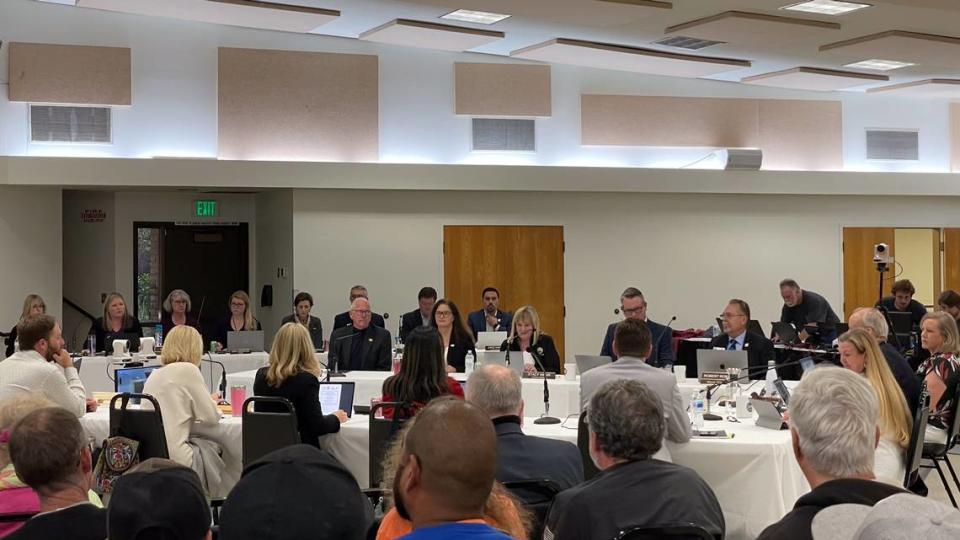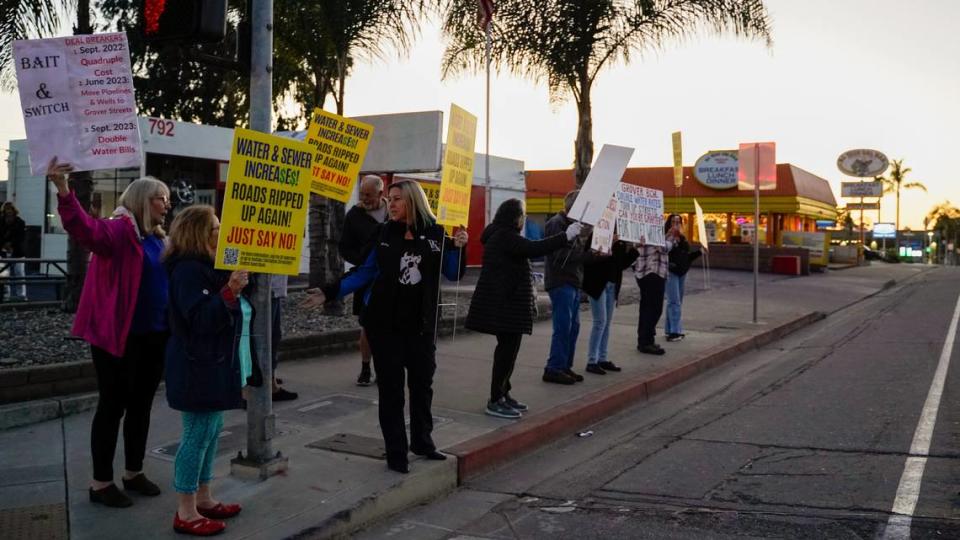Ambitious SLO County water recycling project is suddenly in limbo. What happened?
Plans by three south San Luis Obispo County cities to build a shared water recycling facility are in limbo after a trio of changes has complicated the path forward.
At the March 18 meeting, the Central Coast Blue Regional Water Authority’s Board of directors consisting of Pismo Beach Mayor Ed Waage, Grover Beach Mayor Karen Bright and Arroyo Grande City Council member Kristen Barneich decided to put the project on pause for a year while the proposal is reevaluated.
The cities withdrew development permit requests to the California Coastal Commission and the city of Grover Beach, where facilities were planned to be built, as the project moves into a more uncertain future.
Pismo Beach Mayor Ed Waage told The Tribune recent rainier-than-expected winters have charged Lopez Lake and other water reservoirs to their highest point in decades, alleviating some concerns about being prepared for a drought.
But a loss of of some key grant funding and a ballooning cost estimate also are playing a factor.
“Each city will look at their water supply issues, and the one-year pause is to step back and take a look,” Waage said. “We initially went with Central Coast Blue as another source of water because during the last drought, we were down to perhaps just months of water, and we wanted to provide an additional source of water that’s fairly drought-proof.” f
In the meantime, staff will reevaluate much of the project’s scope — with plans to still move forward, albeit at a lower price tag.

Future of Central Coast Blue up in the air
According to Grover Beach’s website on the project and its costs, the existing plans for Central Coast Blue called for an advanced water purification facility in Grover Beach that can treat wastewater from Pismo Beach’s wastewater treatment plant before it is injected into the groundwater basin.
That recycling of water would have added 900 to 1,000 acre-feet of water to the basin each year, supplying the three cities of the Joint Powers Authority with clean water and providing a buffer against seawater intrusion.
Initially projected to cost around $49 million, by 2022 estimates reached $85-112 million, further spiking to $134-159 million in 2024 due to inflation, according to a news release from the Central Coast Blue Regional Recycled Water Authority.
Grover Beach was on the hook for 36% of those costs, or $16.7 million, to be repaid by water rates, while Pismo Beach was supposed pay 39% and Arroyo Grande shouldered the remaining 25%.
The project was largely funded by state grants, but in the face of the state’s looming $68 billion budget deficit, several recently awarded grants — including a $15 million State Water Resources Control Board grant awarded to Central Coast Blue — were reduced in value.
Central Coast Blue’s State Water Resources Control Board $15 million grant was reduced to $5 million, further complicating funding.

As one of the Central Coast Blue partners, Grover Beach voted to raise more funds for the project in December by increasing its its water rates by as much as 91.8% over the next five years, a move that drew community backlash.
A group opposing the project called Grover Beach H2O and led by former Mayor Debbie Peterson has since gathered enough signatures to get an initiative repealing the rate increase on this year’s ballot.
Grover Beach city manager Matt Bronson told The Tribune the City Council will receive an update on water supply and demands at its April 22 meeting.
He said the added agenda item will also cover how the pause on Central Coast Blue development will affect the city’s water rate structure.
What’s next for Central Coast Blue?
With the project on hold for the time being, it’s unclear whether or not the project will continue in its current form or when construction will start, if at all.
In the meantime, the project’s staff will continue searching for new funding streams and will work on a new communications strategy, according to the staff report.


